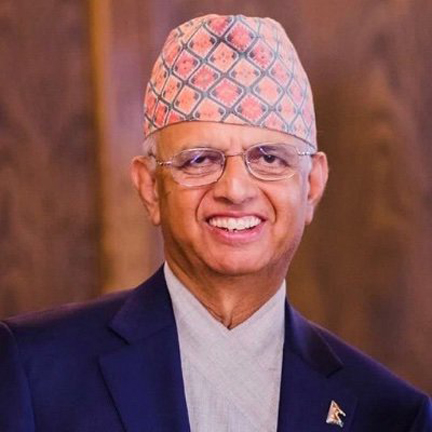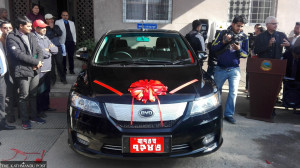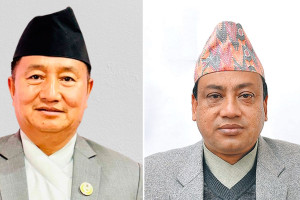Columns
What if Russia, India and China unite?
RIC troika coming close could be a critical step in reviving the hope of an Asian century.
Dinesh Bhattarai
The debate over Russia-India-China (RIC) troika is back in the news, with the Russian Foreign Minister proposing that “cooperation would be in their interests and would contribute to peace and security”, raising the prospect of revitalising the trilateral mechanism that could challenge the US-led world order. Russia has long shown interest in making this format work among these three important partner countries to promote confidence-building measures, eliminate distrust and suspicion, resolve outstanding disputes and replace confrontation with dialogue and negotiation.
Russian Prime Minister Yevgeny Primakov first floated the proposal for a RIC triangular formation during his visit to India in December 1998. The urge for an Asian alternative appears to have coincided with the display of Western military prowess during the 1991 Persian Gulf War—Operation Desert Storm and after. Sources suggest that the idea goes even further to the persistent interest in Asian unity shown by India’s first Prime Minister, Jawaharlal Nehru, during the 1930s and 1940s against the global fascist challenge.
The idea thus envisages a forum to share Asian wisdom, which has the potential to provide alternative paradigms in strategic thinking and facilitate the inclusion of Asian views in global debates and decision-making. In a regular press briefing, Chinese Foreign Ministry spokesperson Lin Jian said, “China-Russia-India cooperation not only serves the respective interests of our three countries, but also helps uphold peace, security, stability and progress in the region and the world. China stands ready to maintain communication with Russia and India on advancing trilateral cooperation.” Indian External Affairs Ministry spokesperson Randhir Jaiswal described the RIC mechanism as “a consultative format “where the three countries come and discuss global issues and regional issues of interest.”
The centre of gravity is shifting to the Eurasian continent, long regarded as the cockpit of global rivalry. The eastern hemisphere of Eurasia is rising, increasingly outcompeting the Western hemisphere. The RIC grouping is seen as a natural outcome of such global development, as these countries occupy a strategic position in terms of economic strength, geography, demography, technological advancement and dynamics of international politics. China is the world’s second-largest economy, and India is the fourth-largest and fastest-rising economy. RIC’s approximate combined economic strength ($25 trillion) is nearly equal to the USA’s $29 trillion. In terms of PPP, RIC is ahead of America. Taken together, they have the largest land area, vast natural resources in energy, minerals and rare earths, enormous human resources, cyber capabilities and huge stockpiles of nuclear weapons to challenge American primacy.
India is the world’s largest democracy and a rising IT power. China is the world’s largest trading and manufacturing nation, connected to every global supply chain. China and India have lifted a significant number of their people out of poverty. Historian Paul Kennedy of Yale University, in his book “Preparing for the Twenty-First Century”, published in the 1990s, claimed that if India and China manage to raise the living standards of their people significantly, the side effects would threaten the earth’s overall atmosphere. However, it is legitimate for both countries to claim a place of pride and seek an increasingly prominent role in global affairs. Russia and China are permanent members of the UN Security Council. China already plays a significant role in the United Nations as its second-largest contributor, heading four of the UN’s seventeen Specialised Agencies.
The coming together of the RIC troika could be a critical step in reviving the hope of an Asian century and making positive contributions towards the evolution of a global framework for peace and security. RIC is accelerating the process of moving towards a polycentric world as all three advocate a ‘just and rational’ new international order, democratisation of international politics and multi-polarising the global order. They are members of the G-20—a forum of the world’s largest economies and the Global South.
The proposal to revive the mechanism comes when America is pursuing an “America First” agenda, including sweeping tariffs. The fact that India and China came together just a few days before the American presidential elections in November 2024—following their deadly border clashes in June 2020 in the Himalayan region—for “disengagement and resolution of issues in the areas,” is not without significance. As Chinese President Xi Jinping told Indian Prime Minister Narendra Modi in 2014, “When China and India meet, the world watches”.
Organisations functioning in the eastern hemisphere of Eurasia include the Shanghai Cooperation Organisation (SCO), Asian Infrastructure Investment Bank (AIIB), and the Boao Forum for Asia—all created and dominated by China—and have shown their value in building confidence, and hold the potential to serve as successful examples of alternative paradigms. All three countries are members of the BRICS (originally Brazil, Russia, India, China and South Africa, now expanded). Based on emerging trends, it can be said that the RIC group could work as a critical component in enhancing cooperation among these three Asian powers as well as fostering their collaboration with other major players.
The deterioration of relations with the West led Russia to deepen its relations with China. China and Russia have a “no limits partnership.” In a thriving anti-Western axis, some links are already strong, others are marked by partial collaboration, and certain issues remain unresolved. China, Russia, Iran and North Korea, abbreviated as CRINK, are forging closer ties and consolidating the anti-Western alliance. China signed a 25-year “strategic agreement” with Iran in 2021. CRINK shares deep hostility towards the United States.
Beijing’s massive infrastructure project called the Belt and Road Initiative (BRI), referred to as “the project of the century,” contains land, maritime and digital versions of the Silk Road. India has expressed its reservations about the BRI. Since the Sino-Indian border clashes in June 2020, India has turned to the US and is now an active participant in the US Indo-Pacific strategy. While India and Russia have strong relations, the intensification of great power rivalry in the Indo-Pacific region is placing strains on this relationship.
The world is fraught with geopolitical tensions and conflicts, ranging from the Russia-Ukraine war to cross-border terrorism, climate change, cyber security threats, and transnational challenges, all of which call for cooperation, collaboration and collective action. On every issue affecting peace, security, stability and prosperity, working with the US remains the most critical prerequisite in building the future world order. Ultimately, the big ‘IF’ is that the success of RIC hinges on the improvement of India-China relations.




 28.39°C Kathmandu
28.39°C Kathmandu

















